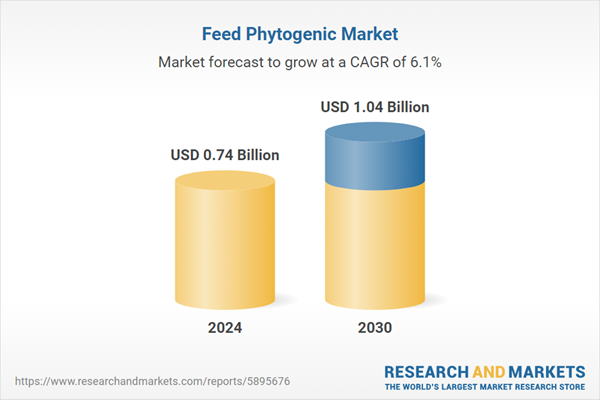Speak directly to the analyst to clarify any post sales queries you may have.
10% Free customizationThis report comes with 10% free customization, enabling you to add data that meets your specific business needs.
Key Market Drivers
Technological Advancements
The feed phytogenics market is benefiting from significant technological innovations that improve the efficiency and stability of plant-derived additives. Advanced extraction techniques help isolate and preserve bioactive compounds, ensuring consistent potency. Microencapsulation technology protects sensitive ingredients from environmental stressors like heat and oxidation, enabling their controlled release in the animal digestive system. Additionally, nanotechnology is being employed to enhance solubility and targeted delivery of phytogenic compounds. Protective coating methods further improve the release profile and shelf life of essential oils and other active substances, maximizing their nutritional and therapeutic benefits in feed formulations.Key Market Challenges
Standardization and Quality Control
One of the key challenges in the feed phytogenics market is ensuring uniform quality and efficacy across different product batches. Since phytogenic additives are derived from natural plant sources, their chemical composition can vary due to environmental and agricultural factors such as climate, soil type, and harvesting practices. This variability complicates efforts to maintain standard ratios of bioactive ingredients in formulations. Additionally, analyzing these compounds requires advanced and costly techniques such as high-performance liquid chromatography (HPLC) and mass spectrometry. Achieving consistent quality and regulatory compliance remains a major hurdle for manufacturers and suppliers in the market.Key Market Trends
Antibiotic Reduction
The shift away from antibiotic use in animal agriculture is a major trend fueling the demand for phytogenic feed additives. Growing concerns about antibiotic resistance and its implications for public health have led to stricter regulations on antibiotic use in livestock. In response, many producers are adopting natural alternatives like phytogenics to promote growth and maintain animal health. Additionally, consumers are increasingly favoring meat and dairy products labeled as antibiotic-free, prompting producers to reformulate their feed strategies. Phytogenic additives offer a viable solution by enhancing gut health, boosting immunity, and improving feed conversion rates - without the risks associated with antibiotics.Key Market Players
- Adisseo Espana SA
- Alltech, Inc.
- Borregaard AS
- Cargill Inc.
- DSM Nutritional Products AG
- IFF (Danisco Animal Nutrition)
- Kemin Industries Inc.
- Land O'Lakes Inc.
- Marubeni Corporation (Orffa International Holding B.V.)
- Prinova Group LLC
Report Scope:
In this report, the Global Feed Phytogenics Market has been segmented into the following categories, in addition to the industry trends which have also been detailed below:Feed Phytogenics Market, By Sub Additive:
- Essential Oil
- Herbs & Spices
- Others
Feed Phytogenics Market, By Animal:
- Aquaculture
- Fish
- Shrimp
- Other Aquaculture Species
- Poultry
- Broiler
- Layer
- Other Poultry Birds
- Ruminants
- Beef Cattle
- Dairy Cattle
- Other Ruminants
- Swine
- Others
Feed Phytogenics Market, By Region:
- North America
- United States
- Canada
- Mexico
- Asia-Pacific
- China
- India
- South Korea
- Australia
- Japan
- Europe
- Germany
- France
- United Kingdom
- Spain
- Italy
- South America
- Brazil
- Argentina
- Colombia
- Middle East & Africa
- South Africa
- Saudi Arabia
- UAE
Competitive Landscape
Company Profiles: Detailed analysis of the major companies present in the Global Feed Phytogenics Market.Available Customizations:
With the given market data, the publisher offers customizations according to a company's specific needs. The following customization options are available for the report.Company Information
- Detailed analysis and profiling of additional market players (up to five).
This product will be delivered within 1-3 business days.
Table of Contents
Companies Mentioned
- Adisseo Espana SA
- Alltech, Inc.
- Borregaard AS
- Cargill Inc.
- DSM Nutritional Products AG
- IFF (Danisco Animal Nutrition)
- Kemin Industries Inc.
- Land O'Lakes Inc.
- Marubeni Corporation (Orffa International Holding B.V.)
- Prinova Group LLC
Table Information
| Report Attribute | Details |
|---|---|
| No. of Pages | 182 |
| Published | July 2025 |
| Forecast Period | 2024 - 2030 |
| Estimated Market Value ( USD | $ 0.74 Billion |
| Forecasted Market Value ( USD | $ 1.04 Billion |
| Compound Annual Growth Rate | 6.0% |
| Regions Covered | Global |
| No. of Companies Mentioned | 10 |









